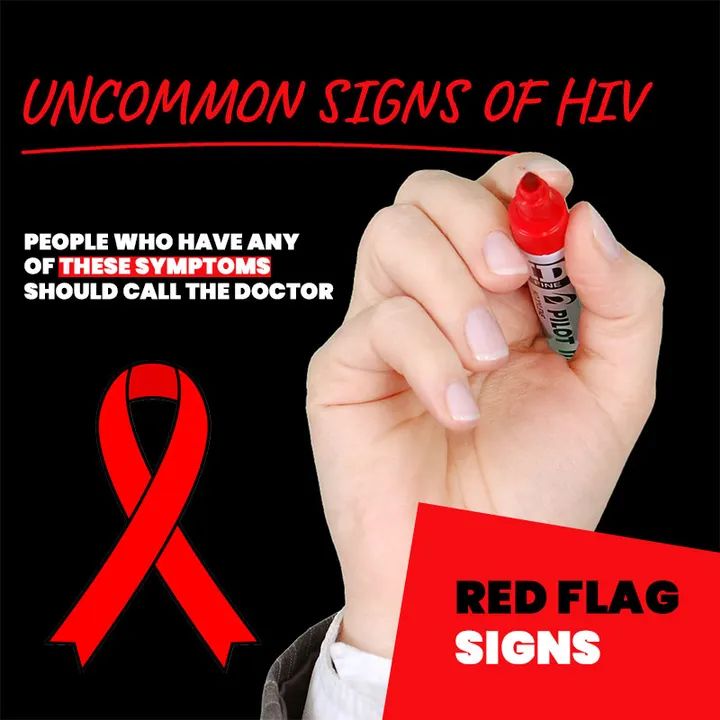Understanding HIV Symptoms: A Comprehensive Guide to Detection and Awareness
Understanding HIV Symptoms: A Comprehensive Guide to Detection and Awareness
Introduction
Human Immunodeficiency Virus (HIV) is a global health concern that affects millions of people. It is crucial to be well-informed about the symptoms of HIV, as early detection and treatment can significantly impact one’s quality of life. In this comprehensive article, we will explore various aspects of HIV symptoms, including how long one can live without knowing, detecting HIV positivity, the emotional and physical impact of living with HIV, and the timeline for symptom manifestation.
Section 1: How Long Can One Live with HIV Without Knowing?
Living with HIV without knowing can have significant implications for an individual’s health. The asymptomatic phase, where an infected person may not show any symptoms, can vary from a few months to several years. Understanding the potential duration of this phase is crucial for early detection and intervention. We will delve into the factors influencing the asymptomatic period and its implications for overall health.
Section 2: How Do You Know If Someone Is HIV Positive?
Detecting HIV positivity involves a series of tests and observations. This section will provide an in-depth exploration of the different methods used for HIV testing, including blood tests, rapid tests, and nucleic acid tests. Additionally, we will discuss the importance of regular testing, especially for individuals engaging in high-risk behaviors, and the role of healthcare professionals in diagnosis and counseling.
Section 3: When You Have HIV, How Do You Feel?
Being diagnosed with HIV can have profound emotional and physical effects. This section will explore the psychological impact of an HIV diagnosis, including coping mechanisms, support systems, and mental health considerations. We will also discuss the physical symptoms that may manifest and their potential impact on daily life.
Section 4: How Long Does It Take to Show Symptoms of HIV in Women and Men?
The timeline for HIV symptom manifestation can vary between individuals and may differ based on gender. This section will provide detailed insights into the typical progression of HIV symptoms in both women and men, highlighting the differences and similarities. Understanding this timeline is essential for early detection and timely medical intervention.
Section 5: HIV Urine Symptoms
While traditional HIV testing involves blood samples, recent research has explored the possibility of detecting HIV through urine samples. This section will discuss the current state of research on urine-based HIV testing, its accuracy, and potential implications for widespread testing and early detection.
Section 6: What Is Usually the First Sign of HIV?
Identifying the first sign of HIV is crucial for early intervention. This section will explore the initial symptoms that may indicate HIV infection, including flu-like symptoms, fever, and fatigue. Understanding these early signs can empower individuals to seek testing and medical attention promptly.
Section 7: HIV Symptoms in Men and Women After 1 Week, 6 Months, and 1 Year
This section will provide a timeline of HIV symptoms, outlining what individuals may experience after 1 week, 6 months, and 1 year of infection. Exploring the progression of symptoms over time will contribute to a better understanding of the virus and aid in promoting early detection and treatment.
Conclusion
In conclusion, staying informed about HIV symptoms is crucial for individual well-being and public health. This comprehensive guide has explored various aspects of HIV symptoms, from the asymptomatic phase to detection methods and the emotional and physical impact of living with HIV. By understanding these facets, individuals can make informed decisions regarding testing, treatment, and overall health management. Regular testing, coupled with awareness and education, plays a pivotal role in combating the spread of HIV and improving the quality of life for those affected.
Frequently Asked Questions
1. What are the early signs of HIV infection?
– This question is often asked by individuals concerned about their health or engaging in activities that may pose a risk of HIV transmission. Providing information on the initial symptoms, such as flu-like symptoms, fever, and fatigue, can help individuals recognize potential signs of HIV infection and seek timely testing.
2. How long can someone live with HIV without knowing they are infected?
– Many people are curious about the asymptomatic phase of HIV and its duration. Addressing this question involves discussing the variability in the asymptomatic period, which can range from months to years. It emphasizes the importance of regular testing for individuals at risk to ensure early detection and intervention.
3. What is the difference between HIV and AIDS?
– Understanding the distinction between HIV (Human Immunodeficiency Virus) and AIDS (Acquired Immunodeficiency Syndrome) is a common query. This question allows for an explanation of how HIV is the virus that can lead to AIDS if left untreated. It’s an opportunity to clarify that not everyone with HIV progresses to AIDS and that early treatment can significantly delay or prevent this progression.
4. How is HIV transmitted, and what are the risk factors?
– Concerns about HIV transmission are prevalent, and individuals often seek information on how the virus spreads. Answering this question involves discussing the primary modes of transmission, such as unprotected sexual intercourse, sharing needles, and mother-to-child transmission. Additionally, addressing common misconceptions about transmission helps raise awareness and promote safer behaviors.
5. What is the current state of HIV treatment and prevention?
– Individuals diagnosed with HIV or those at risk often inquire about advancements in treatment and preventive measures. Addressing this question involves discussing antiretroviral therapy (ART), pre-exposure prophylaxis (PrEP), and other interventions that have significantly improved the prognosis for individuals living with HIV and reduced the risk of transmission.
These frequently asked questions reflect the concerns and curiosity of individuals seeking information about HIV. Providing clear and accurate answers can contribute to increased awareness, prevention, and better management of HIV-related issues.
